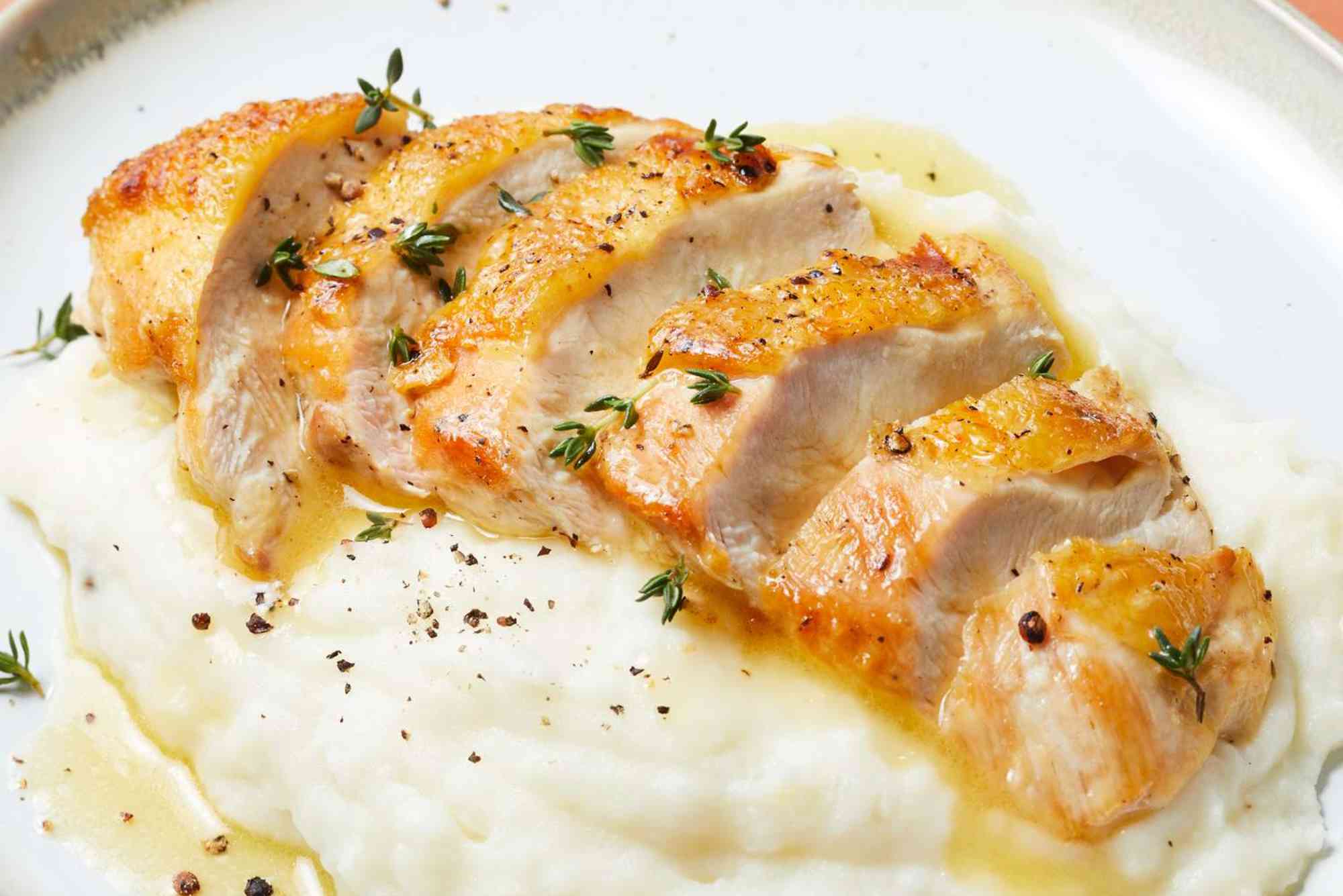Cooked Chicken Breast Nutrition Facts: The Lean Protein Choice
Cooked chicken breast has earned a strong reputation as a lean, versatile, and nutrient-packed protein source. Whether you’re a fitness enthusiast, someone on a weight-loss journey, or simply trying to maintain a balanced diet, this protein powerhouse offers essential nutrients with minimal fat and calories. Understanding cooked chicken breast nutrition facts can help you make more informed dietary decisions while reaping the benefits of this healthy meat option.
Chicken breast, especially when cooked without skin or excess oil, provides an impressive amount of protein with very little fat. It fits seamlessly into high-protein diets, low-carb plans, and heart-friendly meal regimens. But the benefits go far beyond just protein content. From its vitamin profile to its role in metabolism and muscle health, chicken breast is a staple for good reason.
Why Chicken Breast Is a Smart Nutritional Choice
Chicken breast is considered a lean cut, meaning it contains low levels of fat and high levels of protein. This makes it ideal for building and maintaining lean muscle mass, especially when paired with regular strength training. But even if you’re not working out, the nutritional profile of chicken breast supports energy production, hormone health, and tissue repair.
Unlike red meats, chicken breast is low in saturated fat, making it a heart-friendly option. It is also more affordable and accessible than many other protein sources, including fish or plant-based meat alternatives. Its mild flavor allows for countless cooking methods and recipe variations without losing its nutritional value.
Cooked Chicken Breast Nutrition Facts Per 100 Grams
When you cook chicken breast (grilled, roasted, or boiled without skin or breading), its nutrition value remains dense and efficient. On average, 100 grams of cooked, skinless chicken breast provides the following:
- Calories: 165
- Protein: 31 grams
- Total Fat: 3.6 grams
- Saturated Fat: 1 gram
- Cholesterol: 85 mg
- Sodium: 74 mg
- Carbohydrates: 0 grams
- Fiber: 0 grams
- Sugar: 0 grams
As these cooked chicken breast nutrition facts show, it’s a carb-free, high-protein food perfect for various health-conscious diets. Let’s break down these components further to see what each means for your health.
Protein Content: The Muscle Builder
With over 30 grams of protein per 100 grams, cooked chicken breast offers one of the highest protein-to-calorie ratios among common foods. This makes it highly efficient for anyone looking to build muscle, manage weight, or recover from injury. Protein is vital for muscle repair, hormone production, and enzyme function. For those on a calorie-controlled plan, chicken breast allows you to meet protein targets without consuming too many calories or fats.
Fat Profile: Low and Balanced
One of the key reasons health professionals recommend chicken breast is its low-fat content. At only 3.6 grams of total fat and just 1 gram of saturated fat, it supports heart health and keeps overall cholesterol levels in check. Most of the fats present are unsaturated, which play a role in reducing inflammation and supporting brain function.
Cholesterol and Sodium: In Moderation
Though cooked chicken breast contains cholesterol, it’s far less than red meat and is unlikely to raise blood cholesterol when consumed as part of a balanced diet. Sodium levels are also naturally low, especially if you prepare it without added salt. This is good news for those monitoring their blood pressure or following low-sodium diets.
Micronutrients in Cooked Chicken Breast
Beyond the macros, chicken breast also provides vital micronutrients that contribute to its reputation as a nutritious staple.
B-Vitamins for Energy
Cooked chicken breast is particularly rich in B-vitamins such as niacin (B3), vitamin B6, and pantothenic acid. These vitamins play a key role in converting food into energy, supporting the nervous system, and promoting skin and hair health.
Phosphorus and Selenium for Cell Function
It’s also a great source of phosphorus, which helps maintain strong bones and teeth. Selenium, another essential mineral found in chicken breast, acts as an antioxidant and plays a role in thyroid health and immune function.
Zinc and Iron: Immune and Oxygen Support
Zinc helps with immune defense and wound healing, while iron is crucial for producing hemoglobin and transporting oxygen throughout the body. Though not as iron-rich as red meat, chicken breast still contributes meaningfully to daily iron intake.
Cooked Chicken Breast in Different Diets
Thanks to its lean profile and rich nutrition, cooked chicken breast fits into many popular diets.
In Weight-Loss Diets
Cooked chicken breast is often featured in weight-loss meal plans because it is low in calories yet very filling. Its high protein content helps regulate appetite hormones like ghrelin and increases satiety, preventing overeating. Eating protein-rich meals also boosts metabolism through the thermic effect of food (TEF), which means your body burns more calories digesting protein than carbs or fats.
In Low-Carb or Keto Diets
Since it contains virtually no carbs, chicken breast is ideal for keto or other low-carb diets. Paired with low-carb vegetables and healthy fats like avocado or olive oil, it becomes a complete and satisfying meal.
In Athletic or Muscle-Gain Diets
Bodybuilders and athletes frequently rely on cooked chicken breast due to its high protein and low fat composition. It’s commonly included in post-workout meals to maximize muscle recovery and growth.
In Heart-Healthy Plans
Replacing red meats with chicken breast can significantly reduce your intake of saturated fat and cholesterol. For those with heart conditions or high blood pressure, grilled or baked chicken breast is often a recommended protein option.
Best Cooking Methods for Maximum Nutrition
How you prepare chicken breast significantly affects its final nutritional value. While fried or breaded versions increase calories and saturated fat, cooking methods like baking, grilling, boiling, and steaming preserve its lean profile.
Grilled Chicken Breast
Grilling helps retain moisture while avoiding added fats. It also adds a smoky flavor without compromising its nutrition.
Baked or Oven-Roasted
Baking allows you to season with herbs and spices while using minimal oil. It’s a low-effort way to prepare batches for meal prep.
Poached or Boiled
This is the most basic and low-calorie method. Boiling chicken breast keeps it moist and is great for shredding into soups, salads, or wraps.
Serving Ideas to Boost Nutrition
While chicken breast on its own is nutritious, pairing it with the right sides can enhance the overall health value of your meal.
Serve with steamed vegetables, quinoa, brown rice, or leafy greens to add fiber and essential vitamins. Avoid heavy sauces or high-sugar marinades. Instead, use lemon, herbs, or Greek yogurt-based dressings to keep it light yet flavorful.
Tips for Buying and Storing Chicken Breast
Choose skinless, boneless chicken breasts labeled as “organic” or “antibiotic-free” when possible. Store raw chicken in the coldest part of your fridge and use within 1-2 days, or freeze for longer storage. Always cook to an internal temperature of 165°F (74°C) to ensure safety.
Make Cooked Chicken Breast a Regular on Your Plate
Understanding cooked chicken breast nutrition facts empowers you to make better meal choices that align with your health and fitness goals. This lean protein delivers excellent nutritional value in a simple, affordable, and versatile package. Whether you’re looking to build muscle, lose weight, or eat cleaner, cooked chicken breast deserves a spot in your regular meal rotation.
FAQs
How many calories are in 1 cup of cooked chicken breast?
One cup (about 140 grams) of cooked, skinless chicken breast contains approximately 231 calories.
Is cooked chicken breast good for weight loss?
Yes, due to its high protein and low fat content, it’s an excellent choice for weight-loss diets. It helps you feel full longer and supports muscle retention during calorie deficits.
How much protein is in 200 grams of cooked chicken breast?
You’ll get roughly 62 grams of protein from 200 grams of cooked chicken breast—ideal for muscle-building diets.
Is it okay to eat chicken breast every day?
Eating chicken breast daily is generally safe if it’s cooked healthily and part of a varied diet. Make sure to include other protein sources to maintain nutritional balance.
Does chicken breast lose nutrients when cooked?
Some water-soluble vitamins like B6 may reduce slightly during cooking, but most nutrients—including protein—remain intact, especially with gentle methods like steaming or grilling.





